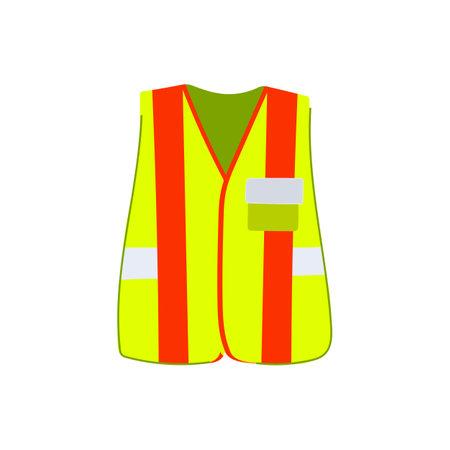Understanding Outdoor Electrical Risks
When it comes to enjoying time in your British garden or sprucing up outdoor spaces, it’s easy to overlook the unique electrical risks that lurk among the flowerbeds and patio furniture. Whether you’re mowing the lawn, trimming hedges, or lighting up a summer barbecue, using electrical equipment outdoors introduces a range of potential hazards. Unlike indoors, outdoor environments are far more unpredictable: damp grass, sudden rain showers, and muddy patches can all increase the risk of electric shock or damage to your devices. Many British gardens feature older wiring or sockets not designed for heavy outdoor use, making it especially important to recognise these dangers. Understanding common risks—such as trailing extension leads across wet lawns, plugging into sockets without proper weather protection, or using tools without adequate safety features—is the first step in keeping both your family and your beloved green spaces safe. Just like tending to young seedlings with care and attention, being aware of these outdoor electrical risks is essential for nurturing a secure environment where everyone can thrive.
Safe Use of Extension Leads in the Garden
When you’re working outdoors, whether you’re trimming the hedges or powering up fairy lights for a garden party, choosing and using extension leads safely is essential. Not all extension leads are created equal, especially when it comes to outdoor use in the UK’s famously unpredictable weather. Here’s how to keep your family and garden safe while enjoying the great outdoors.
Choosing the Right Outdoor-Rated Extension Lead
Outdoor extension leads need to be tough enough to handle British rain, mud, and the occasional football flying across the lawn. Always look for extension leads that are specifically rated for outdoor use—these will be clearly marked with “weatherproof” or “outdoor-rated” labels. It’s also wise to check for a British Standards (BS) certification mark, which ensures the product meets UK safety regulations.
| Feature | Indoor Extension Lead | Outdoor-Rated Extension Lead |
|---|---|---|
| Cable Insulation | Light plastic | Thick, durable rubber |
| Weather Resistance | No | Yes (IP rated) |
| Plug Protection | No cover | Sealed or covered plugs |
| Length Options | Usually shorter | Longer lengths available |
| Colour | White/black (easy to miss) | Bright colours (easy to spot) |
Proper Placement: Out of Harm’s Way
The best place for an extension lead is where nobody can trip over it and where water can’t sneak in. Run leads along fence lines or behind flower beds rather than across open spaces. If you have little ones dashing about or pets with a penchant for chewing, lift cables off the ground where possible or use cable covers designed for gardens.
Avoiding Trip Hazards and Water Exposure
- No puddles allowed: Never let plugs or sockets rest on wet grass or soil. Use weatherproof socket covers if you’re working outside for more than a quick job.
- Keep connections dry: Where two cables meet, elevate the join off the ground using a brick or purpose-made cable holder.
- Tidy up afterwards: Wind up cables neatly after use, storing them in a dry shed or garage out of direct sunlight to prevent damage.
- Avoid daisy-chaining: Don’t connect multiple extension leads together—it’s safer to buy one long outdoor-rated cable that reaches your needs.
A Little Plant Wisdom: Grow Safety Habits Early!
If you get into the habit of checking your extension leads like you’d check on your tomato seedlings—looking for cracks, frays, or signs of mould—you’ll help your whole family stay safe while enjoying every corner of your garden haven.

3. The Importance of RCD Protection
If you’ve ever watched your little ones exploring the garden, you’ll know just how easily curious hands can find their way into all sorts of nooks and crannies. Outdoor electrical safety is much the same—full of hidden surprises! This is where Residual Current Devices, or RCDs, step in as our family’s vigilant garden guardians. An RCD is a clever little device that constantly monitors the flow of electricity in a circuit. If it detects even the tiniest imbalance—say, if someone accidentally touches a live wire or water gets into a socket—it will instantly cut off the power. This quick action can be lifesaving, stopping electric shocks before they have a chance to cause harm. In the UK, it’s now standard practice (and often a legal requirement) to use RCD protection for any outdoor electrical work, from mowing the lawn with an extension lead to powering fairy lights for a summer barbecue. Whether you’re a seasoned gardener or just plugging in some tools for a spot of DIY, having an RCD fitted means you can enjoy your outdoor space with peace of mind. Think of it as putting on your wellies before splashing in puddles—a simple step that keeps everyone safe, no matter what the British weather brings.
4. Battery-Powered Tools: A Safer Alternative
When it comes to keeping your allotment or garden both tidy and safe, battery-powered tools are fast becoming the first choice for many UK families. With the ever-growing range of cordless mowers, trimmers, and hedge cutters now available, tending to your outdoor space can be safer, simpler, and more enjoyable for everyone. By choosing battery-operated equipment over traditional mains-powered tools, you can significantly reduce the risks associated with electrical extension leads and outdoor sockets.
Benefits of Using Battery-Powered Tools
| Benefit | Description |
|---|---|
| No trailing cables | Reduces trip hazards and eliminates the risk of accidentally cutting through a live lead. |
| Weather resilience | Battery tools don’t rely on external power sources, so there’s less risk if conditions turn damp or wet – ideal for unpredictable British weather! |
| Family-friendly operation | Lighter weight and quieter running means these tools are suitable for family use, even when little helpers want to get involved (with supervision). |
Safety Aspects to Consider
- There’s no direct connection to mains electricity while you work outdoors, so the danger of electric shocks is greatly reduced.
- Charging batteries indoors (away from moisture) further protects against electrical accidents.
- Modern lithium-ion batteries often come with built-in safety features such as overload protection and temperature monitoring.
Encouraging Safe Habits in the Family Garden
The use of battery-powered tools is not just about convenience; it’s about setting a positive example for children by showing that safety comes first. When gardening together, discuss why you’ve chosen cordless options and involve young ones in safe practices—like checking that batteries are properly charged indoors before heading outside. This way, every gardening session becomes a chance to nurture both your plants and your family’s understanding of electrical safety.
5. Tips for Family-Friendly Outdoor Electrical Safety
Making Safety a Family Adventure
Outdoor electrical safety isn’t just for grown-ups; it’s a brilliant opportunity to involve the whole family, turning routine safety checks into an engaging learning experience. Think of it as nurturing your garden: everyone has a role in helping things grow safely and beautifully.
Let Little Helpers Join In
Invite your children to join you when checking extension leads, sockets, and battery tools before use. Show them how to spot frayed wires or damaged plugs, just like noticing wilted leaves on plants that need attention. Explain why we always use RCDs (residual current devices) outdoors—compare them to a sturdy fence protecting a flower bed from harm.
Sensory Walks with a Safety Twist
Take a slow stroll around your garden or outdoor space together before plugging anything in. Encourage your children to look, listen, and even gently touch (with supervision) to ensure cables aren’t tangled with branches or lying in puddles. Turn it into a nature-inspired treasure hunt for hazards—can they find anything that doesn’t belong?
Responsibility Through Routine
Create a checklist for outdoor electrical safety and let your child tick off each step with you. Use colourful stickers or draw little sunflowers next to tasks they complete. This hands-on approach fosters both responsibility and confidence, much like caring for their own patch of the garden.
Cultivating Awareness for Life
By making electrical safety part of everyday outdoor adventures, you’re not only protecting your family but also planting seeds of awareness that will blossom throughout their lives. Remember: every safe choice today helps your family—and your garden—grow strong and resilient tomorrow.
6. Responding to Electrical Emergencies Outdoors
Even with the best preparation and care, electrical accidents can still happen in the garden. Knowing what to do in these urgent moments is crucial for every family. Here’s how you can respond safely and confidently, keeping your loved ones as secure as possible.
Stay Calm and Assess the Situation
If someone suffers an electric shock outdoors, the first thing to remember is to stay calm. Quickly check the scene—do not rush in if they are still in contact with live electricity, such as a faulty extension lead or exposed wire.
Switch Off the Power
If it’s safe to do so, turn off the power source at the mains or unplug the equipment. Never touch the person directly while they are still in contact with electricity; use a dry, non-conductive object like a wooden broom handle to separate them from the source.
Call for Help
Dial 999 immediately for emergency assistance. Give clear information about what happened and your location in the garden or allotment, using British terms like “shed” or “greenhouse” if helpful. If you’re in a rural area, mention local landmarks.
Check Breathing and Provide First Aid
If the person is unresponsive and not breathing, start CPR if you know how. Otherwise, place them in the recovery position while waiting for paramedics. For burns or visible injuries, cool the area gently with running water but avoid using ice or ointments.
Keep Everyone Safe
Ask children and other family members to keep away from any waterlogged areas or exposed wires until professionals declare it safe. This is an ideal moment for a gentle reminder about respecting nature’s power—just as we mind sharp thorns on a rose bush, we must always treat electricity with care.
Aftercare and Prevention
Once help arrives and everyone is safe, review what happened together as a family. Discuss ways to prevent future accidents—perhaps by checking tools before use or making sure RCDs are always part of your outdoor setup. Like tending to new seedlings after a storm, nurturing these safety habits will help your family grow stronger and more confident outdoors.


